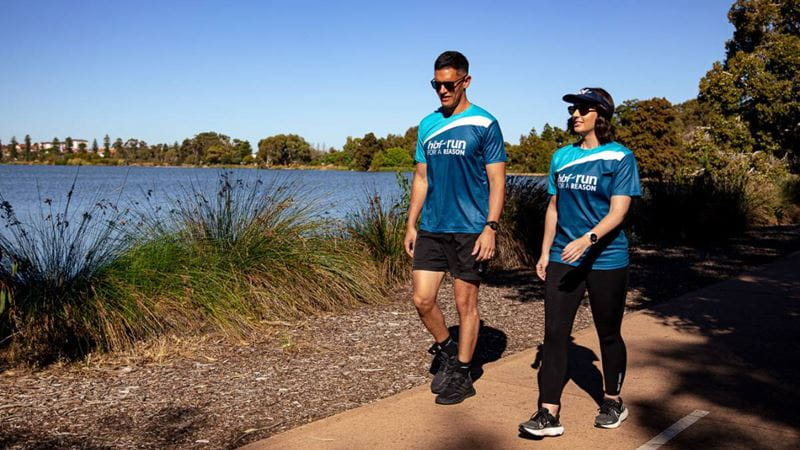Blog article
Foot pain: Causes, tips and how a physio can help

From sharp heel pain in the morning to aching arches after a long day, sore feet are one of the most common reasons people see a physio in Australia. But the good news? With the right advice and a few simple changes, you can get back on your feet (pun intended).
Common causes of foot pain
Foot pain can strike anywhere – from your toes to your heels, arches, or ankles. Common causes include:1,2,3,4,5,6
- Plantar fasciitis: Inflammation of the ligament running along the bottom of your foot (the plantar fascia). Pain can be sharp or aching, often flaring up with activity.
- Overuse: Running or standing for long periods can trigger heel pain.
- Abnormal walking style (gait): Misalignment or uneven weight distribution can put extra stress on certain areas of the foot.
- Foot shape (flat feet or high arches): Structural differences can lead to uneven pressure and increased risk of pain or injury.
- Corns and calluses: Thickened skin from friction or pressure, usually caused by tight or ill-fitting shoes.
- Arthritis or gout: Joint conditions causing swelling, stiffness, and pain, often in the big toe.
- Injuries: Sprains, strains, or fractures from accidents or sports.
- Poor footwear or hard surfaces: Shoes lacking support or prolonged standing on hard floors can lead to chronic pain.
Plantar fasciitis: The usual suspect
Plantar fasciitis is one of the most common causes of arch and heel pain. It involves inflammation of the plantar fascia, a thick band of tissue that supports your arch and absorbs shock.1,2,5
Plantar fasciitis symptoms
Sharp or aching pain under the arch and heel, often worse in the morning or after sitting. Pain can flare after long periods of standing or activity.1,2,5
What causes plantar fasciitis?
Common triggers include overuse (running, jumping), flat feet or high arches, poor footwear, tight calf muscles, sudden activity changes, and added weight from pregnancy or obesity.1,2,5
Plantar fasciitis treatment
If persistent arch and heel pain is affecting you, see a physio. They can assess your movement, recommend stretches and strengthening exercises, and suggest supportive footwear or orthotics.1,2,5
Tips for foot pain relief
- Start with your shoes: Choose supportive shoes with cushioning and firm fastenings. Consider orthotic inserts for flat feet or plantar fasciitis.2,3
- Stretch and strengthen: Calf stretches, towel stretches, and foot rolling can ease tension. Strengthening exercises like toe curls and balance drills help prevent injury.1,2
- Manage inflammation: Rest, ice packs, and anti-inflammatory medication (with GP advice) can reduce swelling.1,6
- Check your walking style: Abnormal gait patterns can strain your feet. A physio can assess and correct your movement.2,4
- Don’t ignore corns, calluses, or nail problems: Seek professional care for safe removal and advice. Avoid cutting them yourself.3,5
- Know when to get help: Persistent pain, swelling, redness, or fever should be checked by a GP or physio.7,8
How a physio can help with foot pain
We spoke with HBF physiotherapist, Jakub Chudy, to learn more about how a physio can help with foot pain.
Foot pain is one of the most common issues we see in clinic, especially plantar fasciitis and arch and heel pain.
But it’s rarely just about the foot itself; how you move, your footwear, and your daily habits all play a big role. In a consult, we look at biomechanics, muscle tightness, and any likely contributing lifestyle factors.
Treatment might include manual therapy, targeted exercises, advice on arch support, and strategies to reduce inflammation. The goal isn’t just to relieve pain, but to help you move better and prevent future flare-ups. Simple changes, like stretching your calves, wearing supportive shoes, and taking regular breaks if you stand or walk a lot, can make a huge difference.


